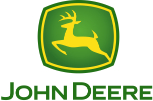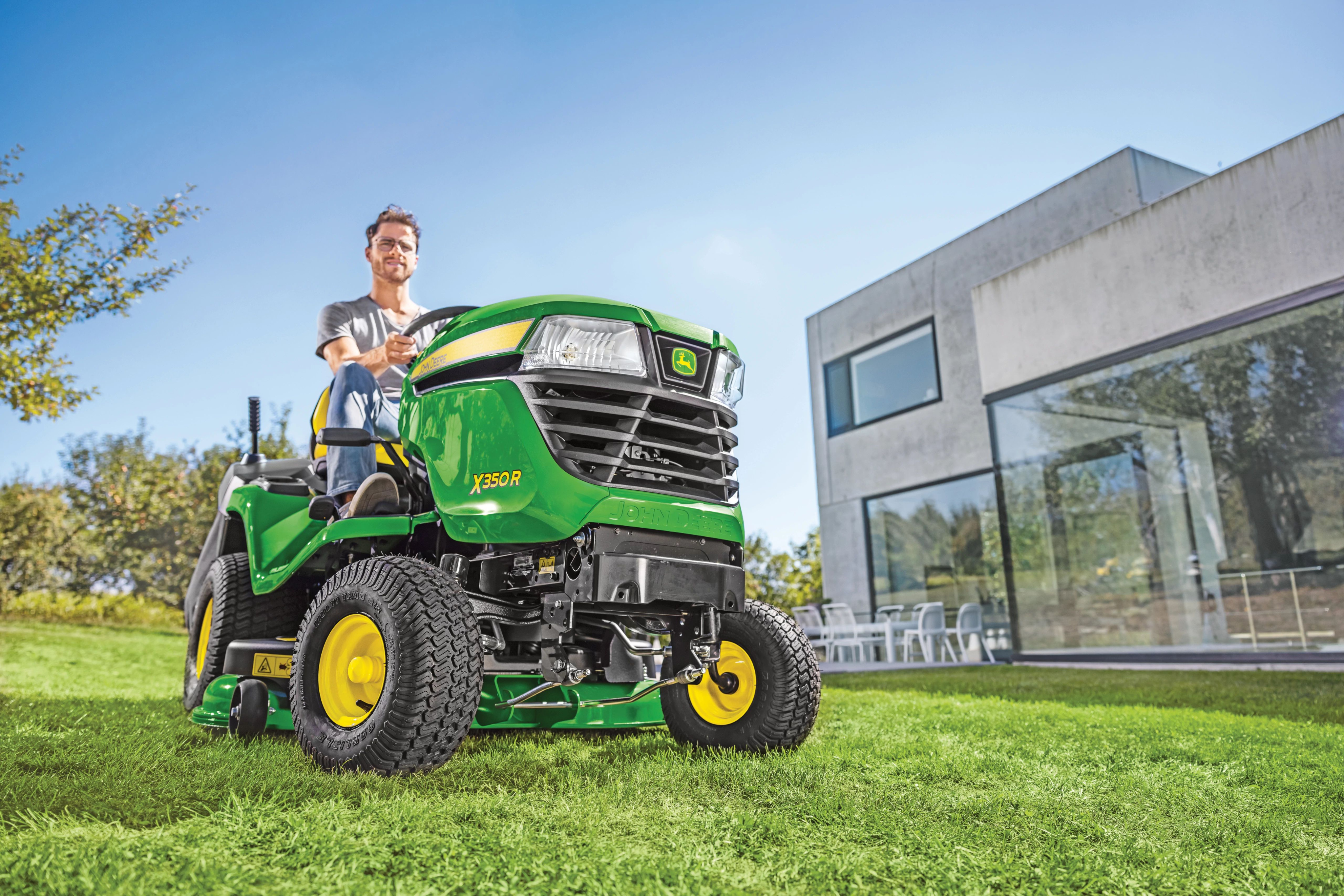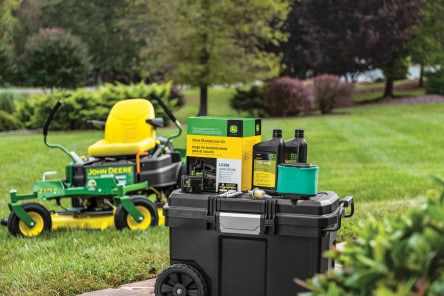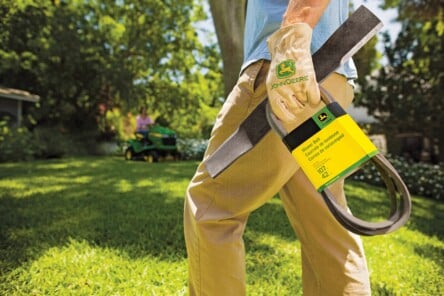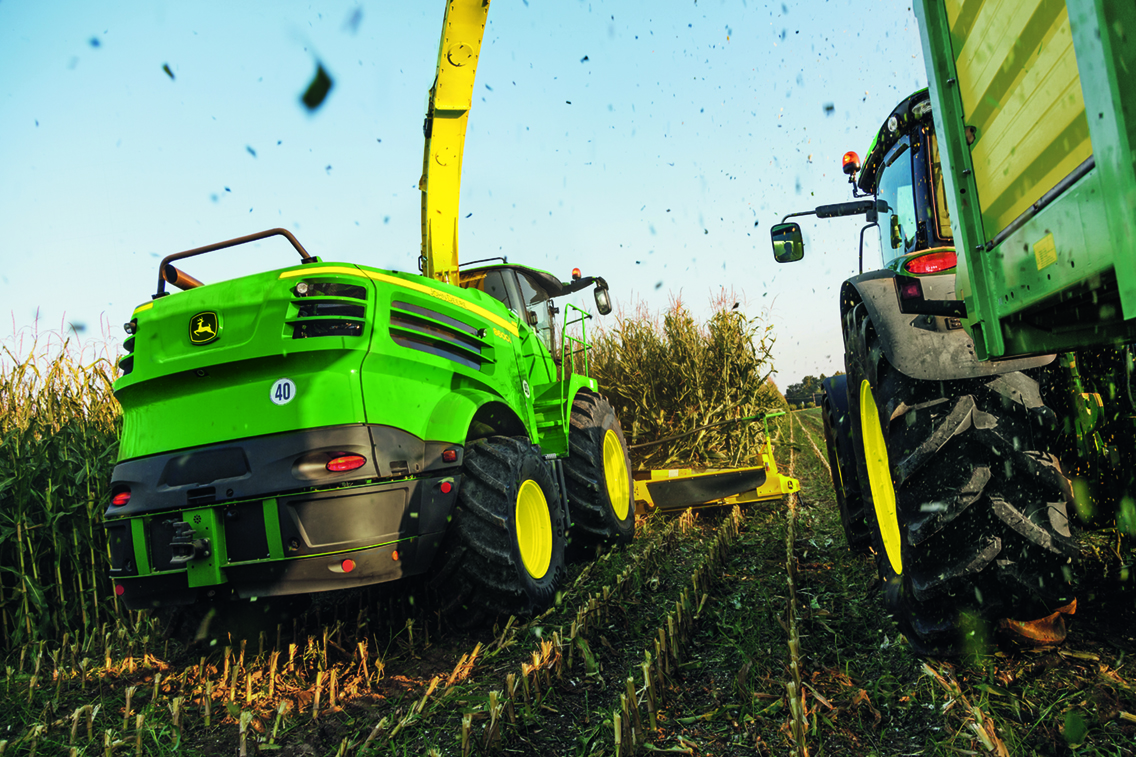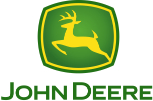With forage harvesters tucking into maize crops across the Tuckwell region, Ben Cave from our demonstration team provides a few reminders of areas requiring attention if operators are to be able to get the maximum from their machines.
Modern John Deere self-propelled forage harvesters are equipped with rotary headers made by Kemper, whose business Deere acquired in 1997. As with other harvesters, a forager can only be expected to produce high outputs and a high quality product if the feed into the machine is smooth and even.
Key header areas requiring attention include gearbox oil change intervals, which must be followed correctly for optimum lubrication performance and minimal wear. To ensure a clean stubble, a precision cut, efficient use of fuel and good forward progress to achieve good hourly workrates, make sure the header blades are sharp and that the gap between the blades is set correctly for the crop density/stem size. Blade life will depend largely upon the conditions in which the header/forager has been working, with machines that have previously worked in muddy conditions more likely to suffer from shorter blade life.
Moving on to the cutterhead/chopping cylinder, it is good if possible to start a maize season with new cylinder blades. See whether the shearbar requires turning, and check whether any shearbar adjustment is required to achieve the correct bar to cylinder gap for the desired chopping result. Check also that the cylinder bearings run smoothly – if there is any evidence of play they should be changed – and see also that the belts which drive the cutterhead are in good condition and tensioned correctly. The spiral band on the chopping cylinder/cutterhead must also be correctly set – this is adjusted from underneath via a series of shims.
Moving on to the kernel processor, check the rollers for wear, as well as the belts that power them and the bearings on which they run. Modern design makes the processor easier to access, but removing it is ideally not a job that would want to be done in-season. Once in the field, adjust the kernel cracker until the maize kernels are just cracked – ensure they are not over-processed, which will waste fuel and result in lost crop energy, or under-processed, which will mean crop will pass through the digester or the cow without giving up the energy they contain.
Turning to the movement of the crop from the machine to the trailer, the blower fan should be checked to ensure the paddles are in good condition and the bearings are sound. Also check the spout liner to ensure there is no excessive wear that will affect crop flow through the chute to the trailer.
When in the field, the key tip, as with modern harvesters of most types, is to keep the forager full for maximum efficiency. If these areas have all been looked after, and daily service routines have been followed, then a forager pushed hard will produce maximum fuel, power and output efficiencies, plus a quality crop sample.
Further in-season support for your John Deere forage harvester is available from your nearest P Tuckwell outlet and our dedicated forager specialists, please get in touch to find out more about our Service+ packages available.

